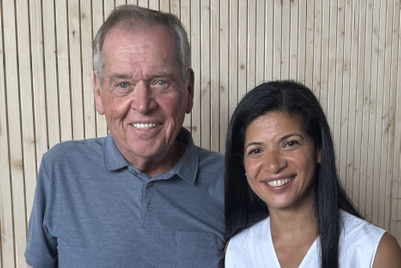
Recently, while listening to an (otherwise excellent) podcast about creativity, I heard some cringeworthy soundbites about the lack of women in creative leadership: “I wish it was more diverse.” “I hope it changes.” “I don’t have an answer.”
It was clear that the two male leaders discussing the topic were genuinely clueless about how to bring about more female leadership in their workplaces.
Unfortunately, things like female empowerment in the workplace don’t just wish themselves into reality. Moreover, double negative rhetoric does not make a positive; when one speaker in the podcast says “It’s not like you’re keeping anybody from getting promoted either,” he eludes the fact that such passivity represents a failure to promote women.
To help such leaders move on from wishes and hopes to tangible programs and eventual results, I decided to write a cheat sheet for useful reforms. We’re all familiar with the acronym DEI, so I’m sticking with that while shifting what it stands for from abstract principles to concrete actions.
D for due diligence
Each industry or company has its own cultural bias and specific roadblocks to the growth of women towards positions of leadership. These could be things like work-life balance, access to training, pay policies, family policies, or recruitment practices.
It’s up to each company to figure out what theirs are because nobody else will. The starting point of any such assessment, beyond gathering data, will involve reaching out and listening to people who may have been overlooked, respecting their experiences and feelings without resorting to judgment or defensiveness. Leaders who do this well will gain insights that help them design policies and programs which genuinely improve diversity, equality, and inclusion.
E for evaluation
We’re used to tracking progress, but feedback loops can be misleading if they’re not well designed. For instance, in cultures with higher power distance, a survey issued by top leaders is unlikely to elicit more critical (and therefore useful) feedback. Leaders should consider alternatives such as building dedicated task forces with diverse representation, or even a shadow board that opens up strategic evaluation and proposals to more voices across the company.
One option is to implement benchmarks for men and women to see whether those who start on equal footing advance at similar rates. This can be done retroactively by looking at current and previous employees, noting any discrepancies, and asking them about their feelings on how their careers have unfolded. For instance, perhaps insufficient maternity leave policies have led some women to avoid taking on extra responsibilities (or leave their jobs entirely). Or perhaps a male bonding culture has left women feeling left out and underappreciated. Learning things like this can point towards which policy changes would be most effective in your organisation.
I for investment
One major excuse leaders make for not taking action on DEI is the misconception that DEI requires resources that they don’t possess. But the reality is that male leaders do promote others into leadership roles, so saying they “don’t have an answer” as to how women can join those ranks seems disingenuous. Chances are, their choices will be vindicated: Sources such as McKinsey have shown that women make better leaders overall, outperforming men at generating profits.
In conclusion, for all the boys in the club, it’s time to go beyond words and wishes. As we clearly recognise that we are sitting with far too few women at the top, it is only logical that we are the ones responsible for changing that state.
The question is: do we have the will to do it?
Vu-Quan Nguyen-Masse is VP, Culture & Brand at Vero and the chair of PRCA’s Workplaces & Culture Group.



.jpg&h=334&w=500&q=100&v=20250320&c=1)


.png&h=334&w=500&q=100&v=20250320&c=1)





.png&h=334&w=500&q=100&v=20250320&c=1)

.jpg&h=268&w=401&q=100&v=20250320&c=1)





